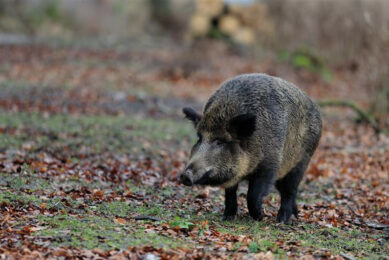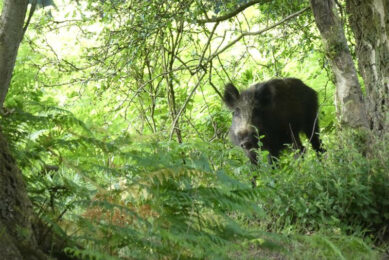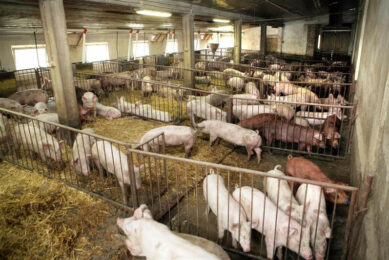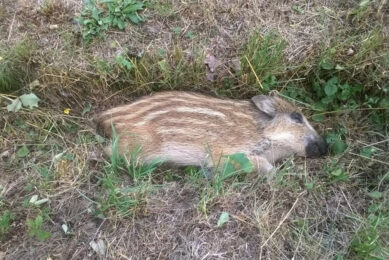ASF Belgium: 400+ infected boar; France steps up measures
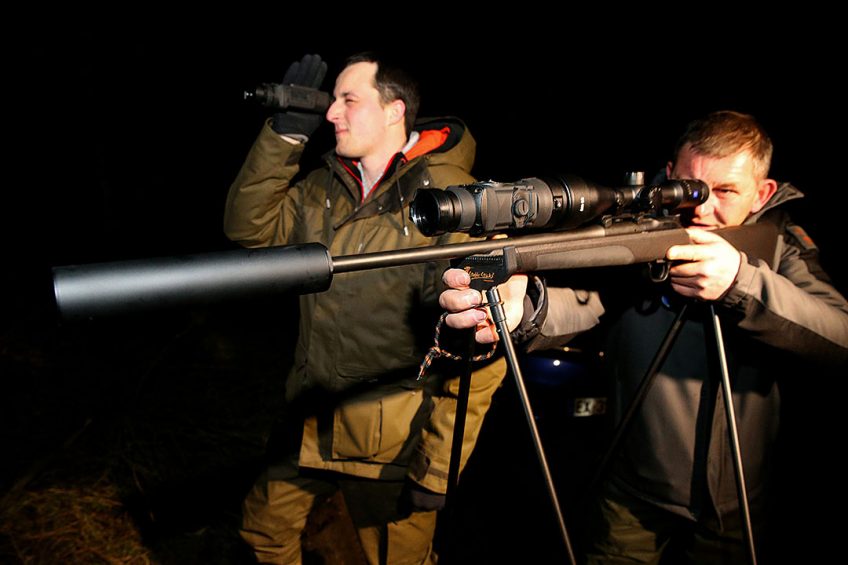
The count of wild boar in Belgium that contracted African Swine Fever (ASF) has risen to 405. So far, no infected boars have been found outside the inner zones in southern Belgium.
The latest count by the World Organization for Animal Health (OIE) shows that in the last week of January 13 new ASF-infected boar were found; 11 carcasses, and 2 infected boar got shot by hunters.
As can be seen on the map below, so far, all outbreaks have been confirmed in wild boar inside the kernel and buffer zones in southern Belgium. Until now, in January 113 positive animals have been found, making it the month with the most positive cases after October 2018. In that month, 139 ASF infected wild boar were reported to the OIE from southern Belgium.
Measures against ASF spread in France
In the meantime, at the French side of the border, there is a lot going on to prevent the virus crossing the border. In January, a so-called ‘white zone’ was created on the French side of the border in which any wild boar is supposed to be shot. The idea is to preventively eradicate the wild boar so the virus will not be able to hop from one boar on the Belgian side to one on the French side.
According to Didier Guillaume, the French minister of agriculture, there were between 500 and 600 wild boar to be culled in this area and it would take about 2-3 weeks to cull them all. The idea is to create a completely boar free zone which will be surrounded by a 1.5m fence. In addition, a total of about 100km in fences will be set up at the border, costing several million euros.
In this undertaking, even 40 soldiers of the French army have been given a task: to provide logistical support for the hunters.
Number of wild boar shot
In the last weekend of January there were mass hunts going on in this ‘white zone’ area. According to the France Bleu website, between 21 January and 4 February 167 wild boar were killed in the ‘white zone’. According to the French authorities, the carcasses will be sent off for rendering after having been shot; the reports by the authorities do not mention whether or not there will be an analysis of whether or not the killed animals were positive for ASF virus.
Denmark: Fence against ASF
Not only in France, fences are being constructed – also the Danish have started to do so, in spite of the absence of a direct threat. The country has a thriving pig business though and wishes to protect its interests.
The threat of ASF coming closer has made Denmark decide to start constructing a fence at the border with Germany, at a length of about 70km. It will be a steel-mat fence of 1.5m high, and extending 50cm underground as well. To allow road and water traffic to cross the border, there will be 20 permanent openings. At other points there will be gates and cattle grids. For smaller animals to pass through, there will be a 20×20 cm opening.
Read more about pig health at the Pig Progress Health Tool
The work will begin in Padborg at the east side of the east-west border. The entire project is expected to be finished in autumn 2019. In a press release, the Danish authorities wrote that during the first 2 months, a total of 5 stretches of the fence of 1 km each will be erected. That will make it possible to fine-tune the construction technique ahead of full scale fence building.
European Commission: Cooperation to fight ASF
The European Commission calls for cooperation in order to fight ASF, at a meeting organised by the Commission and the European Federation for Hunting and Conservation (FACE). Once more a combination strategy was emphasised: in kernel areas where ASF has been found, there should be planned and systemic surveillance. In the region outside these kernel areas, there should be intensive hunting. In both cases, immediate removal of boar carcasses was encouraged.
All you need to know about African Swine Fever and its spread



